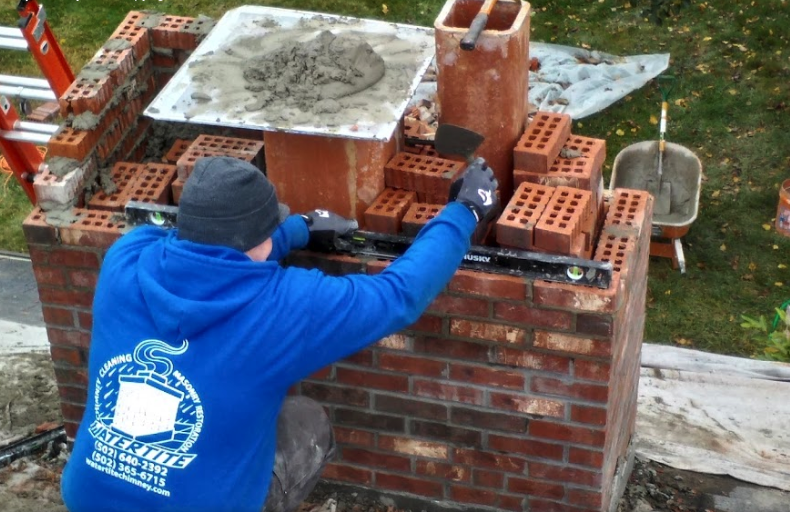DIY Chimney Maintenance San Jose: Step-by-Step Guide for Homeowners
DIY Chimney Maintenance San Jose: Step-by-Step Guide for Homeowners
Blog Article
Expert Tips for Effective Smokeshaft Maintenance You Need to Know
Smokeshafts serve as critical components in many homes, giving warmth and comfort. From the relevance of routine evaluations to safe functional techniques, a thorough technique to smokeshaft upkeep is essential.
Significance of Normal Assessments
Routine examinations of smokeshafts are crucial for ensuring their safety and performance. Chimneys play a crucial function in venting out dangerous gases and maintaining correct airflow in a home. With time, creosote buildup, particles, and architectural damage can happen within the smokeshaft, positioning severe risks such as smokeshaft fires or carbon monoxide leaks.
During a smokeshaft evaluation, educated professionals analyze the condition of the chimney, seeking any type of indicators of damage, obstructions, or damage. They likewise inspect the honesty of the flue, chimney liner, and smokeshaft cap to make certain whatever remains in correct working order. By determining and resolving concerns at an early stage, prospective dangers or pricey repairs can be prevented.
Routine assessments not just aid in maintaining the security of the chimney however likewise add to its total performance. A clean and well-maintained chimney operates much more successfully, making sure correct air flow and lowering the risk of indoor air pollution. For that reason, scheduling annual chimney inspections is a positive action that homeowners can take to protect their home and liked ones.
Cleansing Methods and Frequency
Preserving the safety and security and performance of a smokeshaft includes not just regular evaluations but likewise implementing ideal cleaning methods and determining the optimal frequency for cleaning. Smokeshafts need to be cleaned up by an expert smokeshaft sweep a minimum of yearly, even if they are not frequently utilized. If the smokeshaft is utilized regularly, specifically with wood-burning stoves or fire places, it may need more frequent cleanings to stop the accumulation of creosote, an extremely flammable substance that can lead to smokeshaft fires.
The cleansing process normally involves eliminating creosote, residue, and particles from the smokeshaft flue, smoke chamber, and firebox. Specialist chimney sweeps usage specialized brushes, devices, and vacuum cleaners to make certain extensive cleaning without creating a mess in the home. Furthermore, they examine the smokeshaft's framework for any indications of damage or use that might require repair work. House owners should never ever forget chimney cleansing, as it is important for preserving a useful and secure smokeshaft system - Chimney Maintenance San Jose. Normal cleanings not only decrease the danger of chimney fires but likewise improve the chimney's total efficiency and durability.
Resolving Chimney Leaks

When dealing with chimney leakages, comprehensive examination and timely repair services are vital to prevent water damages and maintain the structural integrity of the smokeshaft. Leakages in a smokeshaft can lead to severe concerns such as mold development, wear and tear of the chimney structure, and even possible fire hazards. To successfully attend to smokeshaft leakages, beginning by inspecting the chimney cap, crown, blinking, and masonry for any type of indicators of damages or wear.
Comprehending Creosote Accumulation
To comprehend the potential dangers of creosote accumulation in smokeshafts, it is important to identify its formation process and influence on smokeshaft performance. Creosote is a black or brown tar-like substance that builds up inside chimney systems when wood hop over to these guys or nonrenewable fuel sources are melted. As smoke increases with the chimney, it condenses and cools down, leading to the formation of creosote, which complies with the chimney wall surfaces.

Routine chimney assessments and cleanings by an expert chimney sweeper are vital in preventing creosote accumulation and making certain the secure procedure of your smokeshaft system.
Safe Operation Practices
Executing correct safety procedures is crucial for the safe and secure and effective procedure of smokeshaft systems. Always guarantee that the smokeshaft is skillfully examined and cleaned up regularly to eliminate any kind of creosote buildup, which can lead to smokeshaft fires.
Additionally, ensure to just shed experienced timber in your fire place, as damp or green wood can produce even more creosote and cause unsafe smokeshaft obstructions. Never leave a fire neglected and always make certain the fire is totally snuffed out before going to bed or leaving the residence. By complying with these safe operation methods, you can delight in a relaxing and cozy fire while making sure the safety of your home and liked ones.
Verdict
In verdict, keeping your chimney is important for guaranteeing its safety and security and efficiency. Routine inspections, appropriate cleansing techniques, addressing leaks, managing creosote build-up, and following secure procedure practices are crucial facets of smokeshaft upkeep.
Over time, creosote build-up, debris, and architectural damages can take place within the chimney, presenting severe dangers such as smokeshaft fires or carbon monoxide leakages.
If the smokeshaft is utilized routinely, specifically with wood-burning ovens or fireplaces, it might need even more regular cleansings to avoid the buildup of creosote, an extremely combustible material that can lead to smokeshaft fires. (Chimney Maintenance San Jose)
To comprehend the potential dangers of creosote build-up in chimneys, it is important to acknowledge its development process and impact on smokeshaft performance. As smoke climbs via the chimney, it cools down and that site condenses, leading to the development of creosote, which sticks to the smokeshaft wall surfaces.
Constantly published here guarantee that the smokeshaft is properly evaluated and cleansed routinely to get rid of any creosote build-up, which can lead to smokeshaft fires.
Report this page